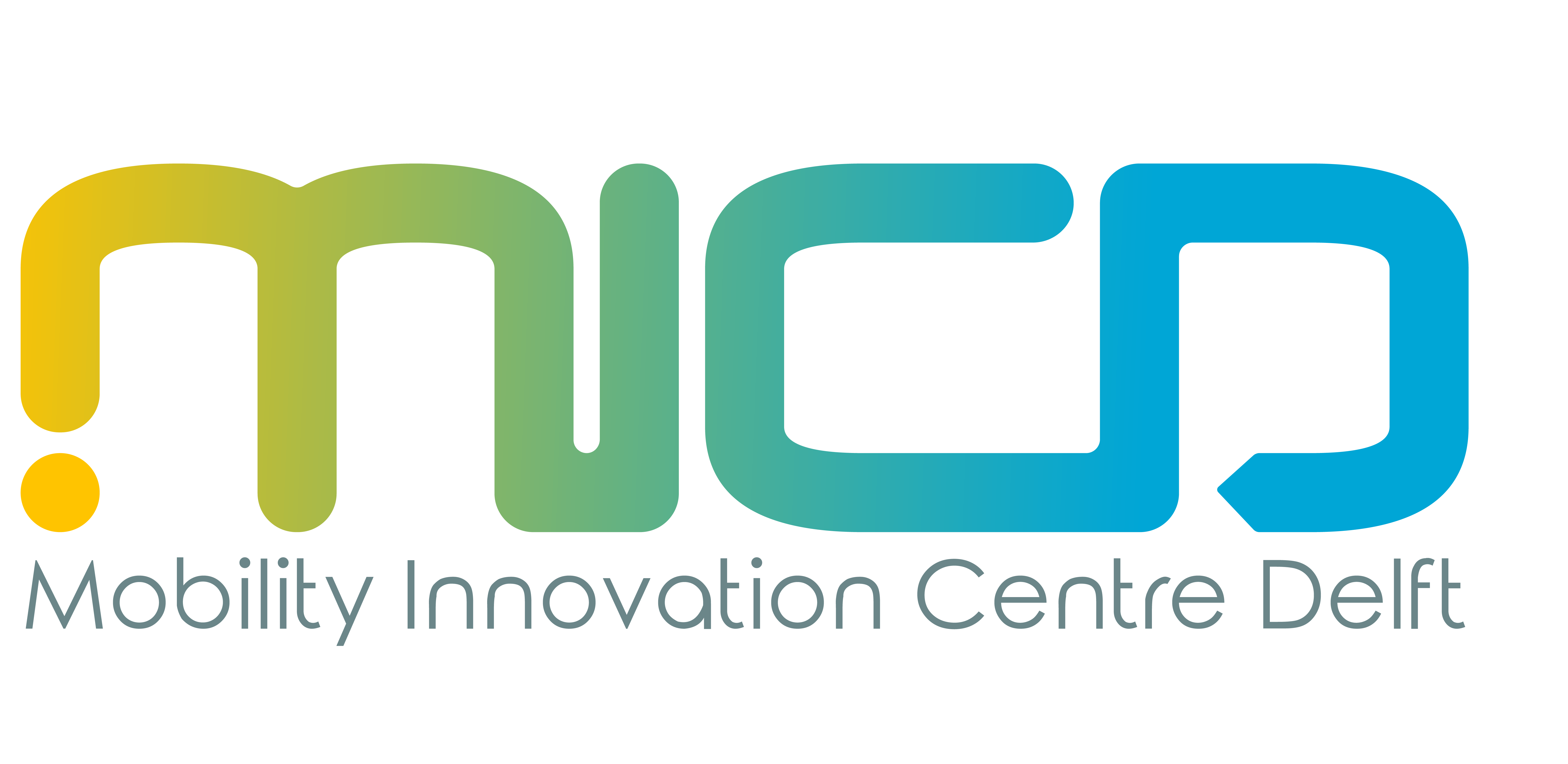Smart mobility hubs are hot. They are seen as a promising instrument to keep (urban) areas accessible and liveable. But how do you design a good, future-proof smart mobility hub? In MICD’s Smart Mobility Hub pilot project, TU Delft researchers are harnessing the latest technologies to create the ideal hub that perfectly matches the mobility needs of an area.
Duration
From June 2021 to May 2023Partners (TU Delft)
Do IoT Fieldlab
TU Delft-CEG, department of Transport & PlanningPartners (other)
MRDH, Municipality of Delft, Argaleo, Studio RAP
Hubs are interchanges where you can hop on and off different modes of transport, e.g. from a car to a train (P+R). In smart mobility hubs, there is also a wide range of smart mobility solutions, such as shared mobility, which are expected to further add to the hubs’ appeal. But how do you make the most of the concept? What works and what doesn’t?
Answering these questions is not as simple as it may seem. You will first have to conduct a preliminary study to determine the mobility needs of local residents and/or visitors, before finding mobility solutions to optimally meet these needs. Using this information, you can then decide whether a hub makes sense, what (smart) mobility solutions it should offer and where, ideally, the hub should be located. Once the need for a hub has been established, the challenge is to balance the diverse interests of stakeholders – travellers, municipalities, public transport companies, shared mobility service providers, real estate developers, etc. – and come up with a good, acceptable design. Finally, there’s the financial side of things. The location, the equipment and new mobility services cost a lot of public money, so finding the most cost-effective solution is a real concern.
Pilot project
To discover how best to organise such an analysis and design process, MRDH, the Municipality of Delft, the DoIoT Fieldlab and MICD started the Smart Mobility Hub pilot project. As part of this project, the partners have started analysing Delft’s city centre and the area near Delft Campus station to accurately identify mobility needs. Next, they will run through the design process in order to create a smart mobility hub near the station.
Analysis
In the preliminary study (analysis), the parties involved use state-of-the-art technology, including MICD’s Delft Outdoor Mobility Digital Twin. This OMDT is used to analyse mobility needs and determine the ideal location and desired smart mobility services for the potential hub. Not only does the OMDT provide clear insight into the current and projected visitor flows in Delft, but it can also determine the effects of creating a hub at location X or Y.
Once there is clear evidence that a hub would have added value and after a suitable location has been found, it is time to map out the needs and wishes of the various stakeholders involved.
Design
Based on the input resulting from the preliminary study, a draft design is made. In the pilot project, this will be done for the area near Delft Campus station. No stone is left unturned, with researchers investigating the right mobility services, appealing additional services (parcel services, takeaway meals, electric charging, etc.), a smart, orderly layout and, for example, modern communication technology such as Lora, WiFi and 5G.
When it appears that the design meets all requirements, it’s time for testing. With a 3D model, stakeholders can use virtual reality and augmented reality to ‘experience’ the new hub. Is this the hub they had envisaged when they made their needs and wishes known? Can they accept the compromises made? The aim of using virtual and augmented reality is to optimise the layout in just a few quick steps.
The actual construction of the hub is not part of the pilot project, but the partner responsible for the design has ample experience in 3D printing and using recycled materials. From their specific, ‘green’ perspective on construction, they can outline exactly what will and will not prove possible.
The objective
By actually running through the entire analysis and design process, the parties involved hope to outline a good, broadly supported design process for hubs, including smart tools and methodologies. All MRDH municipalities will be able to make use of the resulting knowledge and experience.
